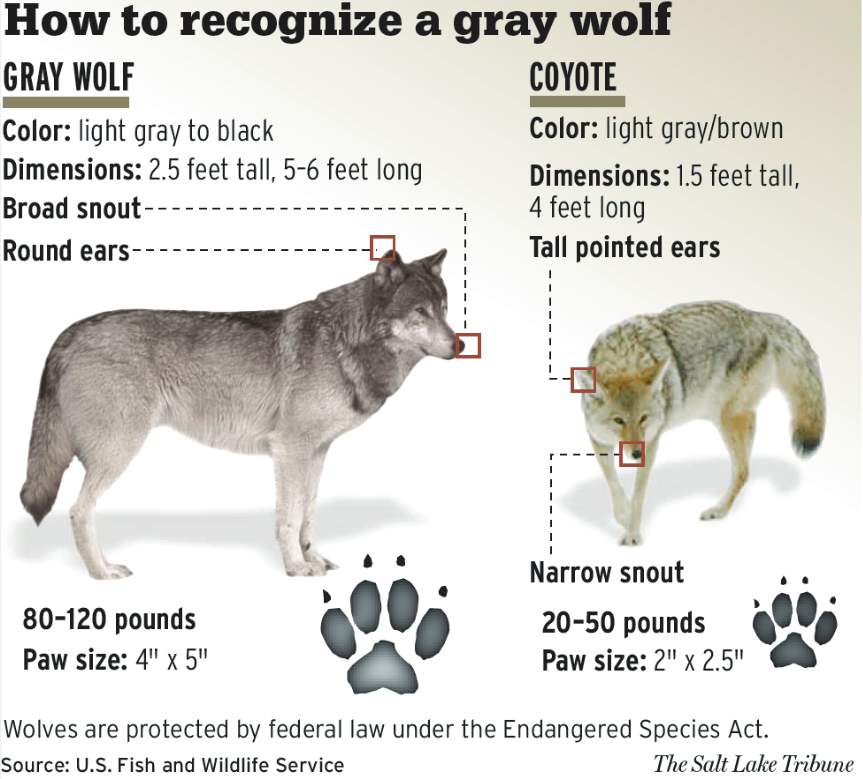Species, Speciation, Coyotes and Wolves. Part 1 of 2.
Teaching “Speciation” to Undergraduate Biology majors was always challenging, especially when teaching non-majors. I used the Species Versus Speciation approach. Think of a “Species” as a photograph and “Speciation” (the process by which new species arise) as a motion picture. Since the dawn of classification of living things we have employed the binomial system of nomenclature where a species is given its own Latin “species” name and lumped into a Genus which a species would share with closely related species. Everyone was taught in Introductory Biology that a species cannot produce fertile offspring if it hybridizes with a closely related species (e.g., a donkey and horse produce a mule which are almost always sterile. That is what makes a species? Hold your horses!

The Coyote (Canis latrans) and the Grey Wolf (Canis lupus) present an interesting example for “Species vs Speciation.” Whereas humans did not reach North America until perhaps 14,000 years ago (give or take a 1,000 years), the ancestors of today’s North American canids (coyotes and wolves) were on the continent for at least eight million years. There is evidence that canids migrated to Eurasia from North American and then came back again.
In more modern times (e.g., before Columbus sailed the Ocean Blue) the wolf was distributed more northerly and the coyote more southwesterly in North America. The two did overlap especially in the southwest U.S. Had we had federal and state wildlife agencies conducting wildlife surveys 400 years ago we might be able to solve some of the debates about canids in North America. We did not and wild canids were seen as threats to human endeavors. As Europeans colonized the eastern U.S. and Canada and made their way west they systematically exterminated wolves. Over the last 100 years coyotes have expanded east and north and are now found from parts of Alaska to Eastern Canada and most of the U.S. (with the exception of Hawaii of course). In fact, coyotes might soon make their way to South America (Part 2).
The physical resemblances and differences between Coyotes and Wolves are apparent (body size, head shape etc.). There are behavioral differences which have acted to isolate them from one another. These are called “pre-zygotic” factors because then tend to prevent sperm and egg from every uniting. Yet these two “species” and domestic dogs (Canis lupus domesticus) are all capable of producing perfectly fertile and healthy offspring. So are coyotes and wolves different species? Yes and No. Motion Picture vs Photo.
This is because coyotes and wolves are a great example of “speciation” where a once common ancestor is diverging into different lineages or new species. It is a “movie” which has not yet produced two very distinct “photos” or species. Speciation takes a long time for mammals and other species which produce only one or two sets of offspring per year, especially when their geographic ranges overlap, allowing occasional mixing of genomes. All the canids have 39 pairs of chromosomes so their Karyotypes match meaning the sperm and eggs unite properly and embryological development proceeds normally after fertilization. The genomes are very close (i.e., all the same genes are there, located on the correct positions on the correct chromosomes).
Speciation is just another term for macro-evolution which culminates in new species after countless small changes (micro-evolution) produce a distinct species. The small changes also include behavioral characteristics which act to produce the pre-zygotic isolation. The biological ingredients of evolution are mutation in DNA, the environment acting on the physical and behavioral changes resulting from phenotypic changes (were the changes beneficial or detrimental) and time, lots of time.
Next Week. Part Two: the genetic evidence.

Leave a comment